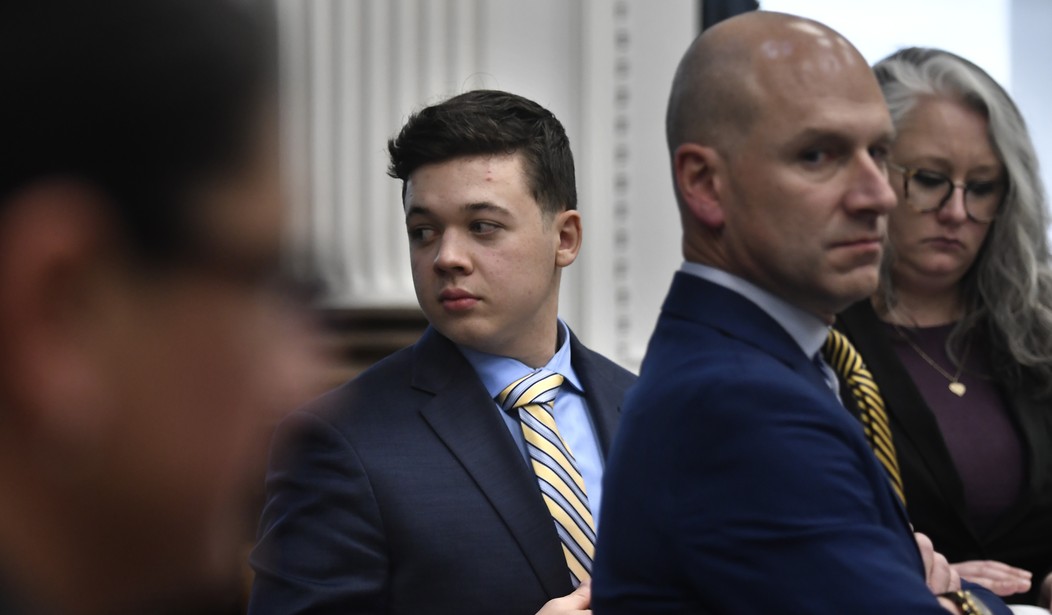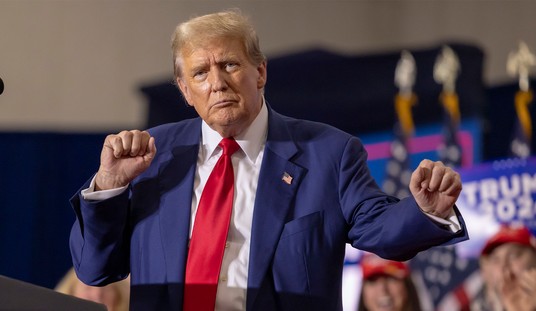Here’s the short take of what has happened in the first week of the trial of Kyle Rittenhouse. Rittenhouse is the 17-year-old teen who answered the call to help a Kenosha business on the third night of riots on August 25, 2020, and who ended up killing two men and wounding a third before the night was over. Videos of the incidents all support Rittenhouse’s claim of self-defense. But in a hyper-political judiciary, it’s hard to know if the woke mob will allow people to dare defend themselves anymore.
The trial began quickly. After dumping an entire array of defense attorneys waiting to help with the jury selection, polling, and public relations, the remaining defense attorneys picked a jury with lightning speed. It was speed dating for jurors. That’s not a compliment. One day to select a jury for an unequivocally hyperpolitical case, which saw a teen framed by the media as a “vigilante” who fired back when provoked and attacked by grown men.
Not everyone agrees, of course.
Though the case for self-defense is on video and clear to see, prosecutors brought the case, hoping to get a conviction based on the political winds. Someone had to pay for the transgressions of the woke protesters and it surely would not be them.
Outside the courthouse, Justin Blake, Jacob Blake’s uncle, leads a march. pic.twitter.com/pAsOxTOUiG
— Stephanie Haines (@TMJ4Stephanie) November 5, 2021
Indeed, two-thirds of the Kenosha jury pool was convinced Rittenhouse was guilty … of something. Had to be. After all, he had a gun and he was white during what was unquestionably a race riot, so he must be a racist or white supremacist. And he must be “guilty, guilty, guilty,” to coin a famous Maxine Waters phrase.
Don’t laugh, that’s the logic that governed at the time and still governs the mob today.
Rittenhouse is accused of six serious counts and one offense of breaking curfew, you know, like the thousands of rioters out there hurting people, breaking things, and setting fires.
Before I go over the highlights of the trial so far, let’s go back in time to what was going on in Kenosha before Kyle Rittenhouse shot and killed two men and wounded a third.
On Monday, August 23, 2020, riots erupted over Jacob Blake’s shooting at the hands of Kenosha police officers. Outrage, no matter how tethered to reality, dovetailed with the death of George Floyd weeks before. The downtown erupted into flames. The national guard was called in to enforce an 8 p.m. curfew.
Attorney Benjamin Crump, who has made millions of dollars grifting off the payoffs from cities over police shootings, waded into the Blake shooting.
LIVE: Attorney Benjamin Crump and family of Jacob Blake hold press conference in Kenosha, Wisconsin.https://t.co/8n8DcJUxeD
— NBC News (@NBCNews) August 25, 2020
Kenosha’s damage from arsonists and looters in mere days reached the equivalent of three years of typical fire damage.
Business owners were on their own.
The Danish Brotherhood was reduced to charred bricks. More than 40 businesses were destroyed in the melee. One business owner watched a livestream of his business being looted. It was a free-for-all all. Burned-out holes were the only things left of some businesses. Cars were torched.
The Department of Corrections building was burned to the ground.
Kenosha Dept of Corrections is on fire pic.twitter.com/zKTM0dJ1VH
— Tired (@NestPasUnPsyop) August 25, 2020
On night three of the riots, a former city councilman says he sent out a call for armed men to keep businesses safe. Kyle Rittenhouse, his sister’s boyfriend, Dominick Black, and several other men and at least one woman answered the call. They were deployed to watch the only surviving Car Source business that hadn’t been destroyed by peaceful protesters. Looters, protesters, and arsonists had destroyed the business’s two other locations causing an estimated $2 million in damage, according to testimony.
Dominick Black was the first and, in my mind, saddest prosecution witness. Simply listening to his testimony I thought that this young man would make a great cop or soldier one day. Black answered crisply and didn’t equivocate. But, in fact, Black has a very good chance of having the rest of his life ruined because he purchased the rifle Rittenhouse used that night. Black stored the S&W M&P rifle in his dad’s gun safe at their home in Kenosha because the 17-year-old was too young to buy and possess it.
Black testified for the state in hopes of getting a lighter sentence for the gun offense which – surprise! – was being prosecuted by the same deputy DA in the Rittenhouse case. What are the odds?
This is just one of the cautionary tales in the Kyle Rittenhouse saga but it won’t be the only one.
The DA’s office tipped its hand with its hoped-for Kyle-is-a-teenage-vigilante narrative when the prosecution’s second chair, Assistant District Attorney Jim Kraus told the judge they would depict the second man Rittenhouse shot as a “hero.”
But neither the facts nor witnesses back this up so far.
Anthony Huber, the second man who was shot by Rittenhouse, joined a mob and followed Rittenhouse, bashing him in the head with his skateboard as Rittenhouse lay on the ground. When Huber grabbed Rittenhouse’s gun after the attack, he was shot and killed.
The prosecution hopes to sell the idea that Huber was a “hero” because he believed Rittenhouse was an active shooter, but that’s not actually how any of this works.
According to Andrew Branca, a use-of-force expert and defense attorney, it doesn’t matter what Huber had in his head, it actually matters what the guy who’d been jumped by a mob, bashed in the head with a skateboard a few times, and was about to lose his gun to this maniac thought.
And he obviously thought he needed to shoot this guy to live.
And so it was for the first shooting of Joseph Rosenbaum. Rosenbaum chased Rittenhouse and then lay in wait for the teen to run by wherein he chased him and then lunged for his gun.
Prosecutors were hoping to use the testimony of The Daily Caller video content editor, Ritchie McGinnis, to buttress their claim that it was, in fact, Rittenhouse who aimed his gun at poor Rosenbaum and shot him in the back. Whoops.
McGinnis, who was there and witnessed the shooting, supported the defense’s contention that Rosenbaum reached for Rittenhouse’s weapon and the teen shot him, discharging four bullets, one of which prosecutors say hit the man in the back.
Prosecutor Thomas Binger had McGinnis on the stand for about three hours, but the essence of his testimony came when the assistant DA asserted, “Your interpretation of what he was trying to do or what he was intending to do or anything along those lines is complete guesswork, isn’t it?” To which McGinnis responded, “Well, he said f— you and then he reached for the weapon,” and then reenacted the move for the court.
Another blow to the prosecution was when they tried to introduce sympathetic information about Rosenbaum when his fiancé testified that he’d just been released from the hospital and carried a bag of supplies in his hand. After opening that door, the defense was allowed to bring up the fact that Rosenbaum had been in the hospital for mental issues and was on medication for bipolar and other maladies.
Rosenbaum also has a police record filled with violent behavior, as does Huber, though that is being kept from the jury.
If you’re trying to convict a person for using self-defense based on the merits, the prosecution has an uphill battle.
This week, the third man Rittenhouse shot and wounded, Gaige Grosskreutz, who pointed his pistol at Rittenhouse and was shot, is expected to testify.
The defense is expected to present its case this week.










Join the conversation as a VIP Member